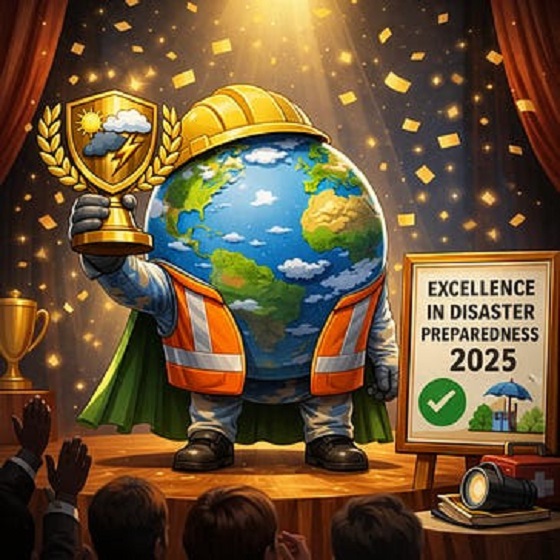Uncategorized
Man charged in synagogue attack was star scholar and athlete

POWAY, Calif. — The man accused of opening fire inside a Southern California synagogue was a star scholar, athlete and musician whose embrace of white supremacy and anti-Semitism has dumbfounded his family and others who thought they knew him well.
John T. Earnest, 19, made the dean’s list both semesters last year as a nursing student at California State University, San Marcos. In high school, he had stellar grades, swam on the varsity team and basked in the applause of classmates for his piano solos at talent shows.
Earnest apparently became radicalized sometime over the last two years and is charged with murder and attempted murder in Saturday’s assault on the Chabad of Poway synagogue, which killed one woman and injured three people, including the rabbi. He is also charged with arson in connection with an attack last month on a mosque in nearby Escondido.
Owen Cruise, 20, saw Earnest every day during senior year at Mt. Carmel High School in San Diego when the two were in calculus and physics together. They were in the school’s amateur radio club together.
Earnest’s piano performances drew audiences to their feet. He did a rendition of “Pirates of the Caribbean” and played Chopin and Beethoven.
“Crowds would be cheering his name,” Cruise said Monday. “Everybody loved him.”
Earnest counted Jews and black people among his friends. His father, John A. Earnest, is a popular physics teacher at Mt. Carmel, where he has worked for 31 years.
“He was very close to his dad,” Cruise said. “He always hung out in his classroom, came to see him at lunch. He always seemed like a nice guy … He didn’t seem like the type of person who would go off the deep end.”
Earnest’s father volunteered to help students with exams and homework, said Cruise, who praised his former teacher for having a big impact on his life. On the morning of the shooting, the elder Earnest was hosting a study hour for an Advanced Placement exam and brought cookies, Cruise said.
Cruise, now a sophomore at the University of California, San Diego, said the suspect lived at home and saw his parents every day.
“The way John T. acted is not representative at all of the way he was raised,” Cruise said. “They are an outstanding family. Some of the finest people I’ve ever met.”
The suspect’s parents said their son and five siblings were raised in a family that “rejected hate and taught that love must be the motive for everything we do.”
“To our great shame, he is now part of the history of evil that has been perpetrated on Jewish people for centuries,” the parents said Monday in their first public comments. “Our son’s actions were informed by people we do not know, and ideas we do not hold.”
The parents, who are
Earnest burst into the synagogue on the last day of Passover, a major Jewish holiday that celebrates freedom, and opened fire with an assault-style rifle on the crowd of about 100.
He fled when the rifle jammed, according to authorities and witnesses, avoiding an Army combat veteran and an off-duty Border Patrol agent who pursued him. He called 911 to report the shooting and surrendered a short time later.
Lori Kaye , a founding member of the congregation, was killed. Rabbi Yisroel Goldstein was shot in the hands, while Noya Dahan, 8, and her uncle Almog Peretz suffered shrapnel wounds.
Kaye, 60, was remembered for her kindness Monday at a memorial service at the packed synagogue in Poway, a well-to-do suburb north of San Diego.
A manifesto — written by a person identifying himself as John Earnest and published online shortly before the attack — spewed hatred toward Jews and praised the perpetrators of attacks on mosques in New Zealand that killed 50 people last month and at Pittsburgh’s Tree of Life synagogue that killed 11 on Oct. 27.
Earnest frequented 8chan, a dark corner of the web where those disaffected by mainstream social media sites often post extremist, racist and violent views.
“I’ve only been lurking here for a year and half, yet what I’ve learned here is priceless. It’s been an
Earnest, who evidently intended to livestream the attack, offered a list of recommended songs for people to listen to while watching, including “Sloop John B” by The Beach Boys and the Pokemon theme song. He said he had planned the attack for four weeks.
“If you told me even 6 months ago that I would do this I would have been surprised,” Earnest wrote.
The FBI said it got tips about a social media post threatening violence against Jews about five minutes before the attack.
The tips to an FBI
A tipster told The Associated Press that he called the FBI tip line at 11:15 a.m. because the post linked to a manifesto that said the author was responsible for the mosque arson in Escondido.
The tipster, who refused to provide his name because of security concerns, said the call with the FBI lasted four or five minutes. He described the FBI as quick and professional and said he did not know what the bureau could have done.
The shooting happened around 11:30 a.m.
___
Associated Press writers Michael Balsamo in Washington, R.J. Rico in Atlanta and Amy Taxin in Poway contributed to this report.
___
This story has been corrected to show the rabbi’s first name is spelled Yisroel, not Yishoel.
Elliot Spagat And Julie Watson, The Associated Press
Uncategorized
Mortgaging Canada’s energy future — the hidden costs of the Carney-Smith pipeline deal


Much of the commentary on the Carney-Smith pipeline Memorandum of Understanding (MOU) has focused on the question of whether or not the proposed pipeline will ever get built.
That’s an important topic, and one that deserves to be examined — whether, as John Robson, of the indispensable Climate Discussion Nexus, predicted, “opposition from the government of British Columbia and aboriginal groups, and the skittishness of the oil industry about investing in a major project in Canada, will kill [the pipeline] dead.”
But I’m going to ask a different question: Would it even be worth building this pipeline on the terms Ottawa is forcing on Alberta? If you squint, the MOU might look like a victory on paper. Ottawa suspends the oil and gas emissions cap, proposes an exemption from the West Coast tanker ban, and lays the groundwork for the construction of one (though only one) million barrels per day pipeline to tidewater.
But in return, Alberta must agree to jack its industrial carbon tax up from $95 to $130 per tonne at a minimum, while committing to tens of billions in carbon capture, utilization, and storage (CCUS) spending, including the $16.5 billion Pathways Alliance megaproject.
Here’s the part none of the project’s boosters seem to want to mention: those concessions will make the production of Canadian hydrocarbon energy significantly more expensive.
As economist Jack Mintz has explained, the industrial carbon tax hike alone adds more than $5 USD per barrel of Canadian crude to marginal production costs — the costs that matter when companies decide whether to invest in new production. Layer on the CCUS requirements and you get another $1.20–$3 per barrel for mining projects and $3.60–$4.80 for steam-assisted operations.
While roughly 62% of the capital cost of carbon capture is to be covered by taxpayers — another problem with the agreement, I might add — the remainder is covered by the industry, and thus, eventually, consumers.
Total damage: somewhere between $6.40 and $10 US per barrel. Perhaps more.
“Ultimately,” the Fraser Institute explains, “this will widen the competitiveness gap between Alberta and many other jurisdictions, such as the United States,” that don’t hamstring their energy producers in this way. Producers in Texas and Oklahoma, not to mention Saudi Arabia, Venezuela, or Russia, aren’t paying a dime in equivalent carbon taxes or mandatory CCUS bills. They’re not so masochistic.
American refiners won’t pay a “low-carbon premium” for Canadian crude. They’ll just buy cheaper oil or ramp up their own production.
In short, a shiny new pipe is worthless if the extra cost makes barrels of our oil so expensive that no one will want them.
And that doesn’t even touch on the problem for the domestic market, where the higher production cost will be passed onto Canadian consumers in the form of higher gas and diesel prices, home heating costs, and an elevated cost of everyday goods, like groceries.
Either way, Canadians lose.
So, concludes Mintz, “The big problem for a new oil pipeline isn’t getting BC or First Nation acceptance. Rather, it’s smothering the industry’s competitiveness by layering on carbon pricing and decarbonization costs that most competing countries don’t charge.” Meanwhile, lurking underneath this whole discussion is the MOU’s ultimate Achilles’ heel: net-zero.
The MOU proudly declares that “Canada and Alberta remain committed to achieving Net-Zero greenhouse gas emissions by 2050.” As Vaclav Smil documented in a recent study of Net-Zero, global fossil-fuel use has risen 55% since the 1997 Kyoto agreement, despite trillions spent on subsidies and regulations. Fossil fuels still supply 82% of the world’s energy.
With these numbers in mind, the idea that Canada can unilaterally decarbonize its largest export industry in 25 years is delusional.
This deal doesn’t secure Canada’s energy future. It mortgages it. We are trading market access for self-inflicted costs that will shrink production, scare off capital, and cut into the profitability of any potential pipeline. Affordable energy, good jobs, and national prosperity shouldn’t require surrendering to net-zero fantasy.If Ottawa were serious about making Canada an energy superpower, it would scrap the anti-resource laws outright, kill the carbon taxes, and let our world-class oil and gas compete on merit. Instead, we’ve been handed a backroom MOU which, for the cost of one pipeline — if that! — guarantees higher costs today and smothers the industry that is the backbone of the Canadian economy.
This MOU isn’t salvation. It’s a prescription for Canadian decline.
Uncategorized
Cost of bureaucracy balloons 80 per cent in 10 years: Public Accounts

The cost of the bureaucracy increased by $6 billion last year, according to newly released numbers in Public Accounts disclosures. The Canadian Taxpayers Federation is calling on Prime Minister Mark Carney to immediately shrink the bureaucracy.
“The Public Accounts show the cost of the federal bureaucracy is out of control,” said Franco Terrazzano, CTF Federal Director. “Tinkering around the edges won’t cut it, Carney needs to take urgent action to shrink the bloated federal bureaucracy.”
The federal bureaucracy cost taxpayers $71.4 billion in 2024-25, according to the Public Accounts. The cost of the federal bureaucracy increased by $6 billion, or more than nine per cent, over the last year.
The federal bureaucracy cost taxpayers $39.6 billion in 2015-16, according to the Public Accounts. That means the cost of the federal bureaucracy increased 80 per cent over the last 10 years. The government added 99,000 extra bureaucrats between 2015-16 and 2024-25.
Half of Canadians say federal services have gotten worse since 2016, despite the massive increase in the federal bureaucracy, according to a Leger poll.
Not only has the size of the bureaucracy increased, the cost of consultants, contractors and outsourcing has increased as well. The government spent $23.1 billion on “professional and special services” last year, according to the Public Accounts. That’s an 11 per cent increase over the previous year. The government’s spending on professional and special services more than doubled since 2015-16.
“Taxpayers should not be paying way more for in-house government bureaucrats and way more for outside help,” Terrazzano said. “Mere promises to find minor savings in the federal bureaucracy won’t fix Canada’s finances.
“Taxpayers need Carney to take urgent action and significantly cut the number of bureaucrats now.”
Table: Cost of bureaucracy and professional and special services, Public Accounts
| Year | Bureaucracy | Professional and special services |
|
$71,369,677,000 |
$23,145,218,000 |
|
|
$65,326,643,000 |
$20,771,477,000 |
|
|
$56,467,851,000 |
$18,591,373,000 |
|
|
$60,676,243,000 |
$17,511,078,000 |
|
|
$52,984,272,000 |
$14,720,455,000 |
|
|
$46,349,166,000 |
$13,334,341,000 |
|
|
$46,131,628,000 |
$12,940,395,000 |
|
|
$45,262,821,000 |
$12,950,619,000 |
|
|
$38,909,594,000 |
$11,910,257,000 |
|
|
$39,616,656,000 |
$11,082,974,000 |
-

 Addictions2 days ago
Addictions2 days agoCoffee, Nicotine, and the Politics of Acceptable Addiction
-

 Business1 day ago
Business1 day agoHow convenient: Minnesota day care reports break-in, records gone
-

 Business1 day ago
Business1 day agoThe great policy challenge for governments in Canada in 2026
-

 Opinion2 days ago
Opinion2 days agoGlobally, 2025 had one of the lowest annual death rates from extreme weather in history
-

 International1 day ago
International1 day agoTrump confirms first American land strike against Venezuelan narco networks
-

 Bruce Dowbiggin3 hours ago
Bruce Dowbiggin3 hours agoThe Rise Of The System Engineer: Has Canada Got A Prayer in 2026?
-

 International3 hours ago
International3 hours agoMaduro says he’s “ready” to talk
-

 International3 hours ago
International3 hours agoLOCKED AND LOADED: Trump threatens U.S. response if Iran slaughters protesters










